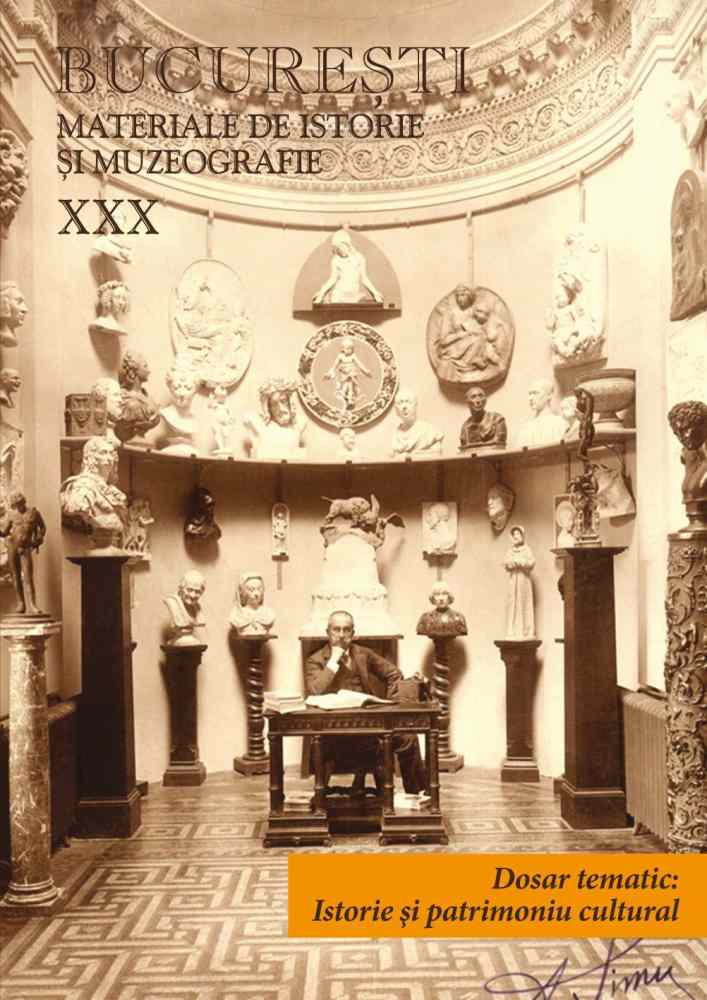
Proiectul unei statui – Nicolae Filipescu
| Autori |
|
| Secţiunea |
|
| Limba de redactare | română |
| Excerpt | The aspect of Bucharest has changed over time as a result of natural disasters or human intervention. The first urban artery, Podul Mogoşoaiei – that became Calea Victoriei after the War for Independence – also underwent modifications to its appearance following systemisation works and the building of several new edifices, sometimes replacing older buildings. An example of the latter action is the case of Sărindar Monastery, one of the first monasteries in Bucharest, gone by the end of the 19th century. In 1896, on the space formerly occupied by the monastery’s altar, a decorative fountain was built, marking Emperor Franz Joseph of Austria. Because the Military Circle of Officers in Bucharest had no headquarters, its leadership decided to act and obtain a terrain where they would build a space to house their activities, choosing the spot where Sărindar Monastery once stood. As a result of discussions between the General Mayor and the President of the Military Circle’s Administrative Council a general agreement was made concerning the passing of the afore-mentioned terrain’s ownership to the military institution, for the building of a terrace. Among the details submitted for debate by the General Mayor to the Municipal Council, regarding the setting up of the square, the possibility of placing a statue is also mentioned. The actions taken by Nicolae Filipescu both as Mayor of the Capital and as head of the Ministry of Defence led to the establishment of a committee for the building of a monument in his honour, a procedure that was usual at the time. In what concerns the placement of this monument the Military Circle square was proposed, perhaps also because in 1911 the Ministry of War, Nicolae Filipescu, who had been Mayor of the Capital when the tearing down of Sărindar Monastery had been decided, approved the offering of a 200.000 lei donation to the Military Circle so they could begin construction. In order to honour the memory of Nicolae Filipescu a request was forwarded in 1940 for the preparation of the place of placement of the statue, as well as for the making of the memorial. To settle all aspects linked to this initiative, Mayor G. I. Vântu requested that the Direction of Architecture put together a study illustrating the aspects tied to the future monument, whose author was sculptor Mihai Onofrei. The difficulties provoked by Romania entering the war postponed the making of the monument until the ceasing of hostilities. Yet the rise to power of the Communist Party shifted priorities in what concerned the city’s aspect. Furthermore, after the establishment of the Party’s total control on December 30th 1948 public space underwent a near-total restraint on the portrayal of politic figures from before the war, many of the already existing statues having been torn down. |
| Paginaţia | |< << 424-435 >> >| |
| Descarcă fişierul | |
| Titlul volumului de apariție | |
| Editura | Publicat de: Muzeul Municipiului Bucureşti |
| Loc publicare | Bucureşti |




